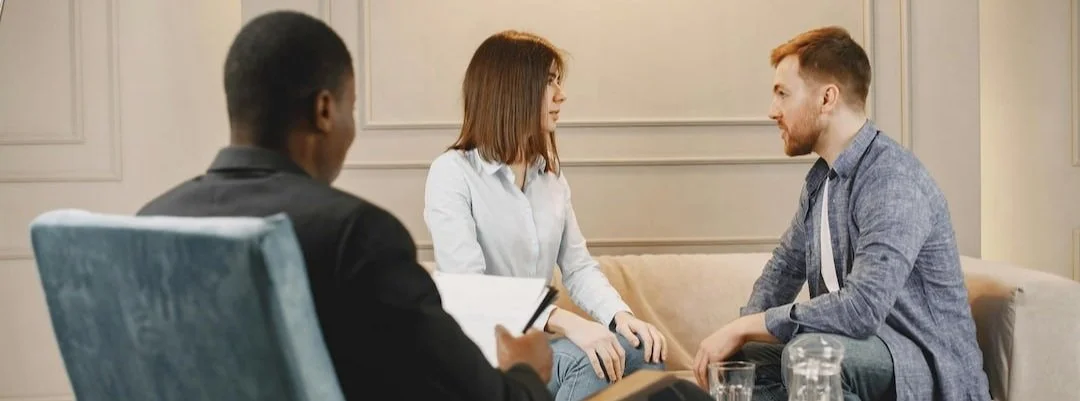Beyond the Same Old Fight: A Case Study of the 3-Day Couples Intensive
Do you ever feel trapped in the same painful argument with your partner, a fight that leaves you both feeling hurt and misunderstood? That exhausting pattern is often a "negative cycle"—an invisible force fueled by our deepest fears that hijacks the relationship and pushes you further apart.
But this cycle doesn't have to have the last word. Breaking it and finding your way back to each other is possible. To show you what this transformative process can look like, we're sharing the powerful, de-identified story of a recent couple. They came to our 3-Day Couples Intensive feeling hopeless and on the brink of separation, but through this focused work, they found their way back to profound connection and hope. This is their journey.
Disclaimer: The following case study is a de-identified account designed to illustrate a therapeutic process and its potential outcomes. To protect client privacy, all names, professions, timelines, and other identifying details in this case study have been changed. The narrative is based on a real therapeutic journey, but it has been altered to ensure complete confidentiality.
The Case Study: From a "Hardened Heart" to Hope in a High-Stress Partnership
The Challenge: A Couple on the Brink
"Mark," a high-powered attorney, and "Jenna," a successful entrepreneur, came to the intensive in a state of quiet desperation. As parents of two young children navigating incredibly demanding careers, they were caught in a perfect storm of stress and disconnection. Their relationship, once a source of comfort, had become a painful cycle of her feeling unseen and his feeling like a failure. They described feeling more like business partners managing logistics than a loving couple, and the silence between them was growing heavier by the day.
Their bond was strained by the weight of past injuries—an early infidelity that was never truly repaired and a past reliance on alcohol to manage stress that left Jenna feeling isolated and devalued. They were stuck, hopeless, and wondering if their relationship could survive.
The Core Dilemma: A Cycle of Unintentional Pain
Through our initial work, we mapped out the tragic, invisible cycle that had trapped them:
Mark’s Dilemma:
His deepest fear was of being a failure in his personal life. When difficult emotions arose, he believed any attempt he made to engage would only make things worse. To protect against this feeling of shame, he would withdraw emotionally, retreat into logical problem-solving, or become defensive—inadvertently sending the message that Jenna’s feelings were an inconvenience to be managed, not a pain to be shared.
Jenna’s Dilemma:
Her deepest fear was of being fundamentally unseen and unimportant. To protect herself from this pain, she would silence her own needs to keep the peace until her hurt and resentment became unbearable. At that point, her pain would erupt in what felt like angry, critical protest—a desperate, armored cry for connection that, tragically, only confirmed Mark’s fear that he was failing her.
Their best attempts to protect themselves were unintentionally confirming their partner's worst fears, pushing them further apart and reinforcing the hopelessness.
The Process & Breakthrough: Finding a New Way to Connect
The 3-day intensive provided the time and safety to interrupt this cycle and forge a new path. By externalizing the cycle as the common enemy, we were able to create space for them to explore the vulnerable feelings beneath their protective armor.
A pivotal moment occurred while gently processing the pain of the past infidelity. Instead of withdrawing, Mark was guided to access and share his profound sadness and shame for the hurt he had caused. As he spoke through tears, something shifted. Jenna, who had built an emotional "armor" around her heart for years, described a "softening" inside her. For the first time, she was able to see his vulnerability not as weakness, but as a powerful testament to his love and care for her.
Later, as they discussed the isolation she felt during his past struggles with alcohol, another breakthrough occurred. She was able to express deep empathy for the solitary pain he must have been in. Hearing this, he felt truly seen and loved, not as a failure to be judged, but as a partner whose struggles mattered. They were no longer on opposite sides; they were beginning to hold the pain together.
The Outcome: Measurable Hope and a New Beginning
The couple's courageous work yielded tangible results, validated by both their own experience and clinical data.
Qualitative Results:
They described the experience as "life-changing." They left with a shared language for their dynamic and a concrete map for how to find each other again. Jenna shared a renewed hope, stating she felt they could finally be "individuals and partners again," highlighting a restoration of self within the relationship. Mark expressed profound gratitude for the support and the newfound clarity and hope for their future.
Quantitative Results:
This subjective progress was mirrored in objective data. Upon completion of the intensive, standardized clinical instruments (such as the PHQ-9 for depression, GAD-7 for anxiety, and DAS-4 for relationship satisfaction) showed a clinically significant decrease in individual symptoms of distress and a clinically significant increase in relationship satisfaction.
This journey is a testament to the power of creating a safe space for couples to slow down, understand their painful patterns, and risk being vulnerable with one another. "Mark" and "Jenna" left not with all their problems solved, but with the essential tools, a renewed emotional bond, and a deep-seated hope that they could now face any challenge together.

